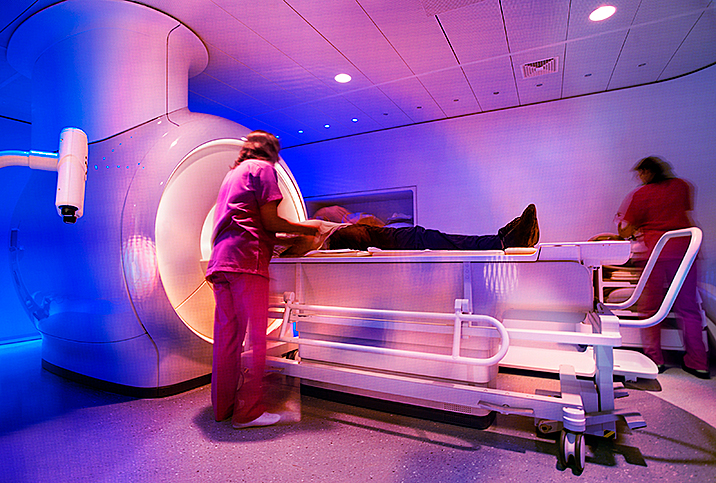Certain Prostate Cancer Screenings Regain Their Importance

Prostate cancer is common, so detecting it sounds like a no-brainer. But in recent years, screening recommendations have changed several times.
According to A. Mustajeeb Haseeb, M.D., a board-certified medical oncologist at California Cancer Associates for Research and Excellence (cCARE), prostate cancer accounts for 27 percent of cancer diagnoses—second-most among men in the United States. It's most common in men ages 65 and older, with 6 in 10 cases occurring in this age group.
Despite the prevalence of the disease, a debate has developed over the benefits of prostate cancer screening versus the risks, which include overdiagnosis and treating the disease when a wait-and-see approach might be more practical.
What do clinicians think?
A bit of background
The prostate-specific antigen (PSA) test and digital rectal examination (DRE) are still used to aid in the detection of prostate cancer in men ages 50 and older, but prior to 2012, they were a more highly rated part of the screening process, especially the PSA test.
"Prior to 2008, primary care physicians were generally ordering yearly PSA testing on their male patients over age 50," said S. Adam Ramin, M.D., a urologist and urological oncologist and the medical director of Urology Cancer Specialists in Los Angeles. "In addition, some physicians performed PSA testing on younger individuals with a family history of prostate cancer."
However, an elevation in PSA level is not always a sign of prostate cancer. The level can increase because of other reasons, such as age, prostatitis, benign prostatic hyperplasia (BPH), certain urological procedures or specific medications.
This fact led to discussions surrounding possible overtesting, unnecessary invasive procedures and nonessential treatments, so screening recommendations changed.
PSA use became 'discouraged'
The U.S. Preventive Services Task Force (USPSTF) downgraded PSA screening to a D grade in 2012, explained Behfar Ehdaie, M.D., M.P.H., a urologic cancer surgeon at Memorial Sloan Kettering Cancer Center in New York. The D grade is a recommendation to "discourage the use of this service."
"These recommendations essentially tipped the scale against physicians counseling patients to undergo PSA screening," Ehdaie said.
"PSA testing became significantly less prevalent because of these changes," Ramin added. "While the recommendations may have had good intentions, they probably led to several unintended consequences. Since the PSA test is not very accurate, it provided support for some physicians to recommend against testing."
In fact, studies done after 2013 indicated 50 percent of primary care doctors did not offer PSA screening to their patients.
According to Surveillance, Epidemiology and End Results (SEER) data, between 2010 and 2015, the overall incidence of prostate cancer in the United States decreased, especially for low-risk disease.
"The declining incidence rate for low-risk disease was temporally associated with decreased prostate cancer screening following the 2012 USPSTF recommendation against prostate cancer screening," Haseeb said.
According to Ramin, many urologists believe the recommendations caused more harm than good, pointing to a "completely unnecessary" increase in patients presenting with advanced, incurable prostate cancer because of the decrease in screening.
Haseeb explained that longer-term follow-up of the clinical trials found PSA-based screening prevents 1.28 out of 1,000 men from dying of prostate cancer. Additionally, screening 1,000 men ages 55 to 69 may prevent approximately three men from developing metastatic prostate cancer.
Screening recommendations changed again
In 2018, the USPSTF reversed its decision and provided a C grade to the PSA test.
Haseeb said the updated recommendations included discussing the risks versus the benefits of PSA screening for men ages 55 to 69.
"The change in grade reflects new evidence about an increased use of active surveillance of low-risk prostate cancer, which may reduce the risk of subsequent harms from screening," Haseeb said.
"The evidence that PSA screening saves men from dying from prostate cancer is not disputed," Ehdaie added. "Data supports screening men less than 70 years old."
Current prostate screening recommendations
Even with input from the USPSTF, recommendations differ slightly between organizations. Haseeb said the American Cancer Society (ACS) adopted detailed screening recommendations in 2016 that highlight the importance of shared decision-making and the need for informed discussion of the uncertainties, risks and potential benefits of screening.
ACS guidelines recommend people not be screened unless they have an informed discussion with their healthcare provider first. Those discussions should take place at specific times, depending on age and risk level:
- Age 50 for people who are at average risk of prostate cancer and are expected to live at least 10 more years.
- Age 45 for people at high risk of developing prostate cancer. This group includes African Americans and men who have a first-degree relative (father or brother) diagnosed with prostate cancer at an early age (65 or younger).
- Age 40 for people at even higher risk. This group includes people with more than one first-degree relative who had prostate cancer at an early age.
The guidelines state that once this conversation has taken place, men who choose to be screened should be offered a PSA test. A DRE may also be done as a part of the process.
Should screening become more widespread?
"Prostate cancer screening saves lives, and smarter screening practices need to be widely disseminated in the U.S.," Ehdaie said.
He defined what he sees as the four tenets of prostate cancer screening:
- Do not test people who will not benefit from testing.
- Do not biopsy people without good reason.
- Don't treat unless you have to, and incorporate active surveillance for patients with low-risk prostate cancer.
- If treatment is necessary, treat at a high-volume center.
"PSA screening should be recommended. PSA is only the initial step in determining the risk for prostate cancer," Ramin explained. "New techniques should become more widespread. These techniques will lower the number of unnecessary biopsies, which are invasive, and will decrease the number of unnecessary invasive treatments."




















